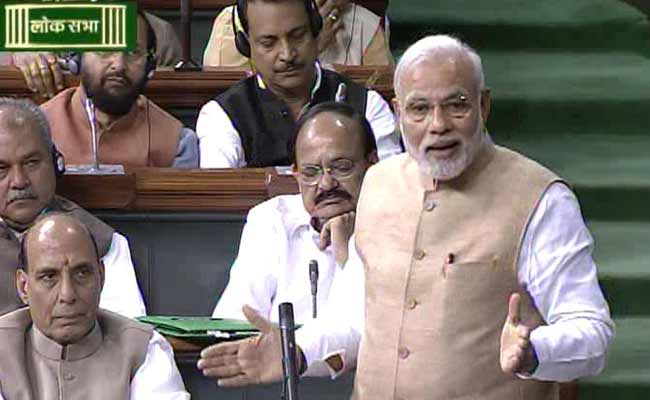The last winter session of parliament was a complete washout. In their planned 22 sittings, the lower house utilized only 15 % while the upper house utilized 19 % of its allotted time. It was the least productive session of the parliament in last 15 years.
The combined opposition hacked most of the allocated period of both the houses attacking Prime Minister and government squarely over the woes of demonetization. The Govt largely remained in a denial mode over the issue of demonetization and helped in more adjournments. The members of both opposition and ruling parties shouted at each other when they tried to speak on the issue and later blamed each other for the deadlock.
It is needless to say that these continuous disruptions in parliament have caused a loss of time, money and business to the parliament. This prolonged chaos and the ruckus had further delayed the long pending bills before the house. The all-important GST rollout is already looking for a missed start date. Moreover, the session after session washouts is taking a toll on the people of India.
As the noise inside the parliament has settled for this session, let us dive beyond the high-decibel cacophony and try to understand the actual politics behind the disruptions of the session.
Let us also analyze which strategy were prevailed, what got defeated and who gained what from this drama. (Of course, the people of India have gained nothing out of it).
During the monsoon session of 2012, the then leader of opposition Mr. Arun Jaitley had famously written in his blogpost titled “Defending the indefensible” that If parliamentary accountability is subverted and a debate is intended to be used merely to put a lid on parliamentary accountability, it is then a legitimate tactic for the opposition to expose the government through parliamentary instruments available at its command. Though the blog very categorically said that the parliamentary obstructionism should be used in a rarest of the rare case, the BJP had made it a regular practice. Whether in disguise, using it too frequently against the extraordinary issues during the UPA-2 regime, BJP had legitimated and authenticated it more.
It was a given fact that these parliamentary disruptions would be going to haunt BJP if they come to the power after 2014 general election. The Govt made a smart start by bringing the Land acquisition ordinance in the initial phase of its inception. In a strong message to the opposition, it tried to convey that the govt can’t be arrested from policy framing by taking parliament at hostage. However, the subject of the ordinance had sidetracked the intention and it gave the opposition an upper hand.
The idea of opposition was to attack the Govt for any reason whatsoever by making both the houses standstill every single time they meet in the parliament. However, the Govt looked shifting gears between being offensive and defensive in response. At times the gifted oratory of few BJP’s ministers and MP’s had brought the accolades and took the Govt home but at other times Govt had been criticized for not being able to run the parliament smoothly.
This winter session, Govt had given a readymade issue on a plate to the opposition. On top of it, the opposition was not united at this degree before. It was all set to be a cakewalk for the opposition and another embarrassment for the Govt before the Govt changed their game plan suddenly.
While the parliament was in session, Narendra Modi called for a first-hand review on the demonetization from the people of India via the NaMo app. The overwhelming thumbs up to the initiative gave the Govt the required confidence to ignore the opposition parties in the parliament. The ruling BJP shred the moral responsibility of running the parliament smoothly and also contributed in bringing adjournments over Augusta Westland and other issues.
In the second prong of the strategy, the Govt started communicating with the common masses in an unprecedented way. From Modi addressing various rallies in all parts of India to Jaitley addressing an increasing number of press conferences. Moreover, with the help of RBI, chief secretaries and the finance ministry the Govt retained most of the screen space during the session.
Towards the end of the session, the opposition looked suffocated and choked. The message opposition trying to give from these disruptions became so unclear that the leader of the combined opposition had to give a statement like “if I could speak in the parliament, there would be an earthquake”.
After a long time, the Govt has scored a winning point in the parliament. The strategy of the Govt has worked. If the Govt continues engaging with the people of India in a similarly aggressive way, we may hope a calmer and less disruptive parliament in 2017.
References :
http://www.thehindu.com/opinion/lead/defending-the-indefensible/article3828649.ece
